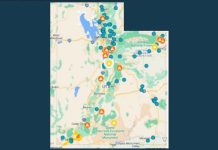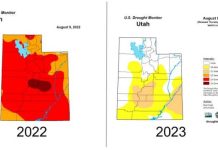
Feb. 15 (UPI) — Researchers have discovered the signature of periodic groundwater flooding in a Martian valley — further evidence that water flowed on Mars in the not-so-distant past.
Researchers from Trinity College Dublin suggest the patch of land on the Red Planet would be an ideal spot to search for signs of life.
“On Earth, desert dunefields are periodically flooded by water in areas of fluctuating groundwater, and where lakes, rivers and coasts are found in proximity. These periodic floods leave tell-tale patterns behind them,” Mary Bourke, a geomorphologist at Trinity, said in a news release. “You can imagine our excitement when we scanned satellite images of an area on Mars and saw this same patterned calling card, suggesting that water had been present in the relatively recent past.”
The patterns discovered by Bourke and her colleagues are known as arcuate striations. Bourke first studied the phenomenon in the Namib Desert in Southern Africa. The striations are geochemically formed. As groundwater evaporates, salts interact with the sands to form cemented ridges.
The layered cement ridges, which extend beneath the surface, remain even as sand dunes drift downwind.
“Following our work in Namibia, we hypothesise that on Mars, similar arcuate striations exposed on the surface between dunes are also indications of fluctuating levels of salty groundwater, during a time when dunes were actively migrating down the valley,” Bourke said.
Their discovery, detailed in the journal Geophysical Research Letters, proved their hypothesis correct.
“These findings are hugely significant,” Bourke added. “Firstly, the Martian sand dunes show evidence that water may have been active near Mars’ equator — potentially in the not-too-distant past. And secondly, this location is now a potential geological target for detecting past life forms on the Red Planet, which is important to those involved in selecting sites for future missions.”






